| Resolving much more than a case |
| |
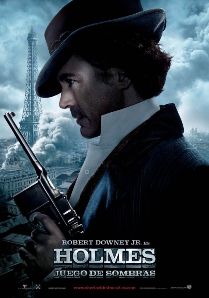 En español En español
Let the game begin
At Christmas time in 2009 we were bombarded with blue giants, fluorescent jellyfish and three-dimensional war dragons. Only the world’s most famous detective was able to compete against the box office phenomenon that James Cameron’s Avatar turned into. And by the way, I’m not referring to Colombo but to the literary character created by Sir Arthur Conan Doyle in 1887: Sherlock Holmes.
Warner Bros came up with a modern and energetic adaptation of the legendary detective that this time was played by the talented Robert Downey Jr, an actor who was at the verge of coming back as a star of the silver screen. The film managed to earn more than 500 million dollars worldwide, achieving 70% of positive reviews in the prestigious web page Rotten Tomatoes, and was nominated for two Academy Awards, including best original score for the composer Hans Zimmer.
With such a resound success, the director of the film, Guy Ritchie, had to put aside what was meant to be his following film, Wolf, and get down to work in creating the sequel. Two years later Sherlock Holmes: A Game of Shadows, appeared on the big screen. The film, inspired by a short story by Conan Doyle, The Final Problem, narrates the story of the clash between Holmes and his most memorable nemesis, Professor James Moriarty (played here by the outstanding Jared Harris). A clash which will develop as if were a great chess game between both of them, and which will lead them to travel around half of the world: ranging from gypsy squats to the French Opera, from the German forests to the snow-covered mountains of Switzerland. All of this with a latent world war about to kick off. Could anybody stop this ? The answer to this can be found in the cinemas of the entire country.
The pieces on the chessboard: Hans humane side
A lot has been written about Hans Zimmer. Or better said, a lot has been written about his work. However it’s been this year that, as a result of composing alongside Lorne Balfe, the music for the beautiful and moving “spot” of the 50th anniversary of International Amnesty, that lots of us have got to know the most humane side of the composer. Few of us would ever have imagined that one of his most important projects showing his gestures of solidarity would still remain to be known. A project which, thanks to his new assignment, the Sherlock Holmes: A Game of Shadows score, would grab the attention of the media, but let’s break this down.
{youtube width=»355″ height=»210″}gem-itJGjU4{/youtube}
After several years collaborating with Amnesty International, in 2009 Hans Zimmer decided to create the Remote Control Charitable Foundation. This Foundation, chaired by Bonnie Abaunza, a human rights activist, with several years of experience under her belt in Amnesty International, focussed on human rights, education and human aid, working side by side with a large number of charities and non governmental organisations (NGOs).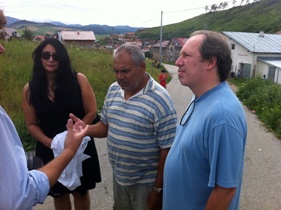 In 2010, after the French Prime Minister Nicolas Sarkozy decided to close all of the squatter areas of the gypsy town in France, Zimmer focussed on the situation of extreme poverty of this excluded ethnic group. In 2010, after the French Prime Minister Nicolas Sarkozy decided to close all of the squatter areas of the gypsy town in France, Zimmer focussed on the situation of extreme poverty of this excluded ethnic group.
The future would give Hans a great opportunity to really get to know the goings on in this town thanks, ironically, to the script of a great production of Hollywood Sherlock Holmes: A Game of Shadows. In this, one of the supporting actresses is a beautiful gypsy tarot reader who helps the leading actors to solve the main plot of the film. In which, this time being required in the script, Zimmer needed to re-introduce the gypsy style music that he had already used in the previous film of the saga in a tangential way and in which he had fallen so much in love with. At the end Hans would be able to unite his concerns with his great passion, the music.
In July 2011, Zimmer, Abaunza, Zoe Zimmer (daughter of the composer and photographer), the co-producer of the album Lorne Balfe, backed by the secretary of state during the presidency of Bill Clinton, Madeleine Albrigth, and chairwoman of the National Democratic Institute, started a five day journey throughout Slovakia to see the gypsy squatter areas first-hand, to talk to the political leaders of the area and on passing find the musicians who would play a part in the sound track of the film.
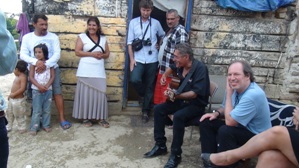 Fate lead them to a community: The Roma. Just like the majority of the squatter areas which exist worldwide, regardless of their ethnicity, The Roma, lacks running water, electricity or adequate resources in order to access a sanitary or educational system. A place where the welfare state is an utopia. However, the generosity of the group and the virtuosity of its musicians stole the heart of all of those that passed by. Fate lead them to a community: The Roma. Just like the majority of the squatter areas which exist worldwide, regardless of their ethnicity, The Roma, lacks running water, electricity or adequate resources in order to access a sanitary or educational system. A place where the welfare state is an utopia. However, the generosity of the group and the virtuosity of its musicians stole the heart of all of those that passed by.
At the end, 13 of these musicians were taken to the study in Vienna, where, under Hans´ supervision they recorded the pieces that we will find in the soundtrack album of the film. Music which transmits to us the heroism and happiness of the people who find themselves in situations of extreme poverty, giving us a lesson on survival, humility and optimism. You have the opportunity to collaborate in a good cause by buying the CD edited by Watertower Music. A small gesture which could make a big difference.
{youtube width=»355″ height=»210″}0wpL8f6dV7U{/youtube}
Opening: «Hungarian defence»
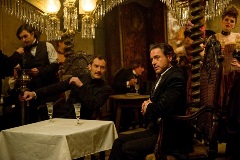 Hans Zimmer stated around ten years ago that he wasn’t interested in composing or working in sequels, as he would much prefer to dig into fields that he hadn’t dealt with before. Ironically, in the last years, the German composer has been involved in different franchises which have been extremely successful worldwide such as Pirates of the Caribbean, Christopher Nolan’s Batman saga or the adaptations of Dan Brown’s novels. However, these words should not be forgotten as in each one of these, the composer has tried to explore and bring to light new elements to a greater level than before in creating a musical sequel. So much so that he has even stylistically changed his previous sound in examples such as Angels & Demons or Pirates of the Caribbean: At world’s end. Hans Zimmer stated around ten years ago that he wasn’t interested in composing or working in sequels, as he would much prefer to dig into fields that he hadn’t dealt with before. Ironically, in the last years, the German composer has been involved in different franchises which have been extremely successful worldwide such as Pirates of the Caribbean, Christopher Nolan’s Batman saga or the adaptations of Dan Brown’s novels. However, these words should not be forgotten as in each one of these, the composer has tried to explore and bring to light new elements to a greater level than before in creating a musical sequel. So much so that he has even stylistically changed his previous sound in examples such as Angels & Demons or Pirates of the Caribbean: At world’s end.
It should come to no surprise then that the score for A Game of Shadows is different to or nothing to do with the first Sherlok Holmes score in two main aspects. The first, trying to use as little as possible the catchy main theme already used substantially in the first film, and the second, the homogeneity between soloists and orchestra achieved in the first work is broken, allowing to perfectly make a distinction between the two composition styles.
The album starts with a bang. With the suite composed by Zimmer for this film. In the space of just 18 minutes this has been divided by Hans into three movements, allowing us to take a breather and to be able to concentrate on each segment in the best way possible.
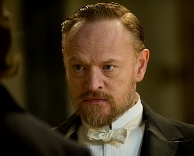 In “Shadows – Part 1”, track of just under 2 minutes, the most important thematic element of the entire disc is introduced: the motive for Professor James Moriarty, a phrase specifically composed for clarinet which seems to describe the sinister intellect of the character. Perhaps, likewise to what happened in Gladiator with the motif used for Commodus, this is the melody that comes to the mind of the character on coming up with all of his evil plans. «Shadows – Part 2«, is, for whoever is opinionated about this, the highlight of the entire album. This extensive track, lasting over 8 minutes, is a delight for the Zimmer action fans. As per always with this playwright, in the suites which are conceived before adapting the music and the images, he plays around with the different ideas, he fully explores them in all their possible forms. Using Hans own words, “Let’s see how far I can get with this”. The track starts with a ticking which simulates the hands of a clock, probably the clock which controls the time in this great chess game between Holmes and Moriarty. With predominance of Zimmer’s loved french horns, contrasting with the slow piano, various wind instruments (flutes, oboes) and the cymbals that we already link to the character of Holmes, we will hear tremendous rises in a crescendo, one of his trademarks, which will be used in one of the most memorable action sequence in the film: the chase trought the forest. Pay attention to the last minute in which a powerful percussion, intensified by larger-than-life tubas and trombones will make the most powerful sound equipments shake. In “Shadows – Part 1”, track of just under 2 minutes, the most important thematic element of the entire disc is introduced: the motive for Professor James Moriarty, a phrase specifically composed for clarinet which seems to describe the sinister intellect of the character. Perhaps, likewise to what happened in Gladiator with the motif used for Commodus, this is the melody that comes to the mind of the character on coming up with all of his evil plans. «Shadows – Part 2«, is, for whoever is opinionated about this, the highlight of the entire album. This extensive track, lasting over 8 minutes, is a delight for the Zimmer action fans. As per always with this playwright, in the suites which are conceived before adapting the music and the images, he plays around with the different ideas, he fully explores them in all their possible forms. Using Hans own words, “Let’s see how far I can get with this”. The track starts with a ticking which simulates the hands of a clock, probably the clock which controls the time in this great chess game between Holmes and Moriarty. With predominance of Zimmer’s loved french horns, contrasting with the slow piano, various wind instruments (flutes, oboes) and the cymbals that we already link to the character of Holmes, we will hear tremendous rises in a crescendo, one of his trademarks, which will be used in one of the most memorable action sequence in the film: the chase trought the forest. Pay attention to the last minute in which a powerful percussion, intensified by larger-than-life tubas and trombones will make the most powerful sound equipments shake.
To finish this musical trilogy, “Shadows – Part 3”, which after introducing a new action theme for Sherlock and Watson, leads us to the final climax of the film: 5 minutes of the cat chasing the mouse. A piece of suspense which grows bit by bit, using drum rolls, strings, small bells and clarinet which deconstruct the Holmes theme until coming to an aggressive end.
Middlegame: «Castling»
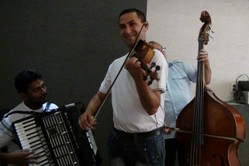 After such an incredible start, the intensity must fall. And it does so by including a new style. The gypsy music starts, out of the blue, suddenly allowing 13 Slovakian musicians and their instruments: violins, clarinets, accordion or the dulcimer, amongst others, to really shine. After such an incredible start, the intensity must fall. And it does so by including a new style. The gypsy music starts, out of the blue, suddenly allowing 13 Slovakian musicians and their instruments: violins, clarinets, accordion or the dulcimer, amongst others, to really shine.
Based on the previous themes composeds by Zimmer, these musicians improvise
different variations of such, honouring us with songs such as the elegant “It´s so Overt It´s Covert” used in the scene where Holmes and Watson travel in a beautiful car at the end of the century towards the stag night of the second, crossing the roads of a Victorian London. It follows him: the impetuous “Romanian Wind”, the weird “He´s all me, Me, Me” (where at the end of this we can hear Hans commenting on the piece) and the “Did You Kill My Wife?, with a very Morrincone-like solo trumpet, freeing one of the dramatic motifs of the first disc. And talking about Morricone, if the last piece sounded like the Italian Maestro, then the next is directly yours. “Two mules for Sister Sara” is used in one of the most hilarious and applauded moments of the film which I will not give away). Hans also uses two pieces of classical music in the key sequences for Professor Moriarty, perhaps down to the refinement that all university teachers should have.
“To the Opera” is a Mozart piece used in one of the most important sequences of the film. The effectiveness of an in parallel editing within an operatic sequence and the film action is still astonishing, despite it being such a used resource. Matthew Margeson arrange this classic piece, in which we briefly find ourselves interspersed in the action of the film, a bit excessive but not least less effective for this reason.
The other classic work is “Die Forelle” by Schubert, which Moriarty seems to love and listens to at his favourite times of the day (read this with certain irony if you have seen the film).Mel Wesson, Zimmer’s good friend and collaborator, is this time who helps to create the right tone to allow this piece to fit into the film. Just as it is stated in the interior notes, Wesson “tortured” Schubert’s piece with electronic distortions and creepy sound design to make it a nightmare so that nobody would have the guts to listen to it at night time, reminding us of a film that he already worked on: Hannibal.
(The mother of our beloved german composer should also take some predilection for this piece as she taught him to sing at the early age of 5).
Endgame: Checkmate
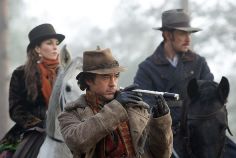 We get to the end of the disc, recuperating in a certain sense the essence that we started with. Tracks which yet again belong to the original score , following a certain chronologic order and using all of the thematic elements shown beforehand We get to the end of the disc, recuperating in a certain sense the essence that we started with. Tracks which yet again belong to the original score , following a certain chronologic order and using all of the thematic elements shown beforehand
The action tracks “Zu Viele Fuchse Fur Euch Hnase” and “Red book”, which in a reasonable manner recuperate the homogeneity between soloists and orchestra that we found in the first score. Coming to the end of the disc (I’m not going to talk about the remix, which even though it is certainly well produced, continues to be out of place) it is situated: the over dramatic “Moral Insanity” ( really powerful even on being brief), “Memories of Sherlock” and “The End?”, a really inspired and accelerated version ( I wonder how many Timpani they broke recording it) of the Holmes main theme , which leaves us wanting more.
To conclude, Sherlock Holmes: A Game of Shadows is a score to have fun with, enjoy and even dance to. For the purists, Zimmer is Zimmer, and if his action music resembles The Peacemaker then that’s because this is his style. On the other hand, one must be prepared to find himself in the gypsy town in all of its purity. On knowing the rules of the game (my last comparison with a game of chess, I promise), we could pass on the energy of some musicians and composers having a great time for a great cause. Shall we dance?
Thanks to Bonnie Abaunza for the photos, information and generosity.
Translated to english by: Natalie Sorolla
|
No hay comentarios